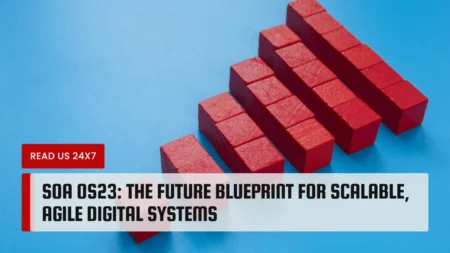Cryptocurrencies have revolutionized finance with their decentralized, borderless nature, but this innovation also demands a heightened responsibility for security. For cryptocurrency holders, the safe storage of digital assets is paramount. In this comprehensive exploration of cryptocurrency cold storage and key management techniques, we uncover the best practices necessary to safeguard your digital wealth. As you navigate this ever-evolving landscape, it’s essential to remain vigilant and informed about the latest developments. If you are facing issues while investing, analyze your investing skills and consider investing education. You can click tradeedgeai.com and start learning!
What is Cryptocurrency Cold Storage?
Cryptocurrency cold storage is a security practice that involves keeping a significant portion of your digital assets completely offline, isolated from the internet. This approach stands in contrast to hot wallets, which are connected to the internet and more vulnerable to hacking attempts. Cold storage is widely regarded as one of the most effective ways to protect your cryptocurrencies from theft.
Cold storage methods can take various forms, including:
Paper Wallets
A paper wallet is a physical document that contains your cryptocurrency public and private keys. It can be generated offline and provides a high level of security. However, it’s crucial to keep the paper wallet physically safe from damage or loss.
Hardware Wallets
Hardware wallets are specialized devices designed solely for the purpose of securely storing cryptocurrency keys. These devices are highly secure and offer user-friendly interfaces for managing your assets.
Air-Gapped Computers
An air-gapped computer is a device that is never connected to the internet. It is used exclusively for cryptocurrency-related operations and remains offline at all times. This extreme isolation ensures that your keys are never exposed to online threats.
Key Management Best Practices
To effectively secure your cryptocurrency investments, it’s essential to adopt key management best practices:
Generating Strong Cryptographic Keys
The security of your cryptocurrency holdings starts with the strength of your cryptographic keys. Entropy, or true randomness, is crucial for generating secure keys. Use trusted sources and secure methods for key generation to avoid predictable or weak keys.
Backing up and Securing Private Keys
Creating secure backups of your private keys is vital to prevent the loss of your assets. Store backups in physically secure locations, such as bank vaults or fireproof safes, and consider using multiple backup copies for redundancy.
Multisignature Wallets
Multisignature wallets require multiple private keys to authorize a transaction. This adds an extra layer of security, as it becomes more challenging for an attacker to compromise multiple keys simultaneously.
Timelock and Spending Limits
Setting timelocks and spending limits on your cryptocurrency accounts can protect your assets in case of unauthorized access. Timelocks require a waiting period before funds can be moved, while spending limits restrict the amount that can be withdrawn within a certain timeframe.
Security Threats and Risks
Understanding the potential security threats and risks associated with cryptocurrency cold storage is essential for effective protection. Some common risks include:
Physical Damage or Loss of Storage Devices
Hardware wallets and paper wallets can be damaged, lost, or stolen. Implementing secure backup measures is crucial to mitigate this risk.
Forgetting Passwords or Losing Access to Keys
In the world of cryptocurrencies, there are no password recovery options. Losing access to your private keys means losing your funds permanently.
Malware and Phishing Attacks
Malicious software and phishing attacks can compromise the security of your cryptocurrency holdings if you’re not cautious. Always use trusted software and be wary of unsolicited messages or emails.
Advanced Cold Storage Techniques
For advanced users seeking even greater security, consider the following techniques:
Hierarchical Deterministic (HD) Wallets
HD wallets allow you to generate an unlimited number of public addresses from a single seed phrase. This simplifies key management, especially if you hold multiple cryptocurrencies.
Cold Storage in a Safe Deposit Box
Storing your hardware wallet or paper wallet in a bank’s safe deposit box can provide an extra layer of physical security. Ensure that your chosen bank has robust security protocols.
Geographic Redundancy
To guard against disasters like fires or natural calamities, consider creating geographic redundancy by storing backups in multiple locations.
The Future of Cold Storage and Key Management
The cryptocurrency landscape is continuously evolving. Keep an eye on emerging trends and regulatory developments. In the future, we can expect increased integration of security features into wallets and more user-friendly solutions for cryptocurrency storage and management.
Conclusion
Cryptocurrency cold storage and key management techniques are critical aspects of responsible cryptocurrency ownership. By understanding the intricacies of these practices and adopting best-in-class security measures, you can significantly reduce the risk of losing your digital assets. Remember that the cryptocurrency world is constantly changing, so staying informed and adapting to new security challenges is essential for safeguarding your wealth in the digital age.








